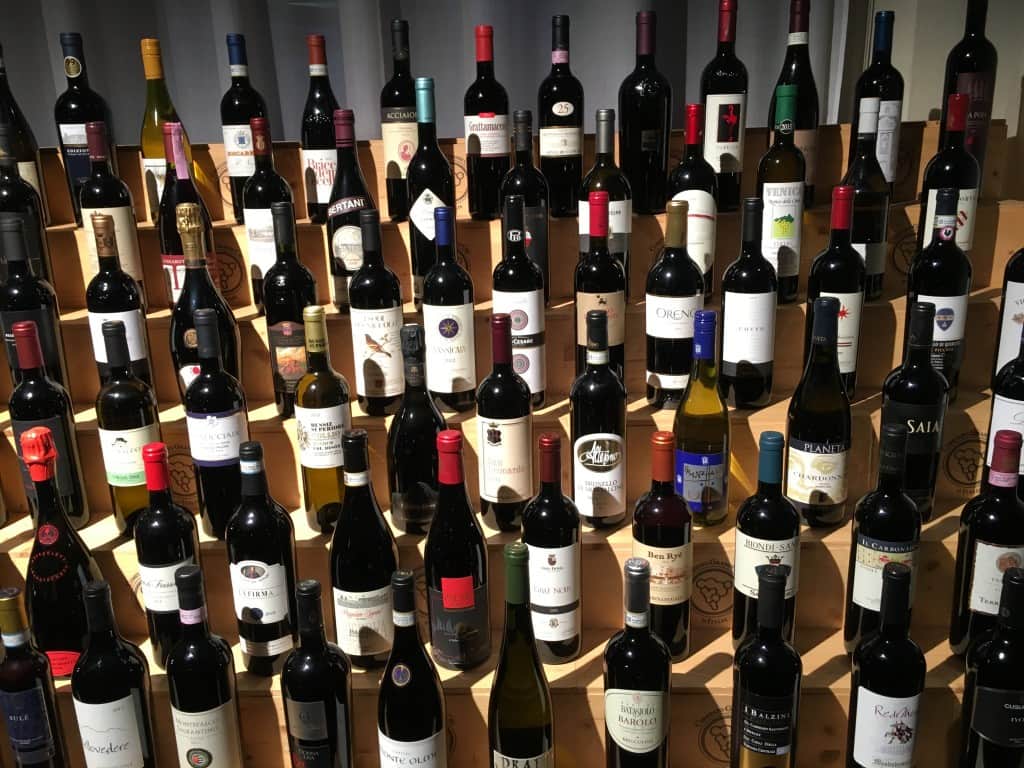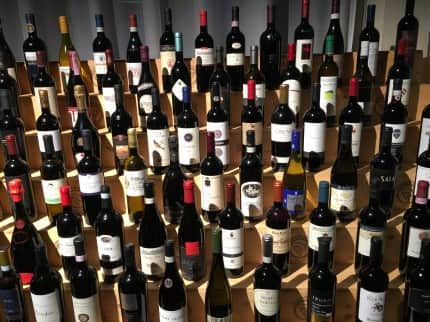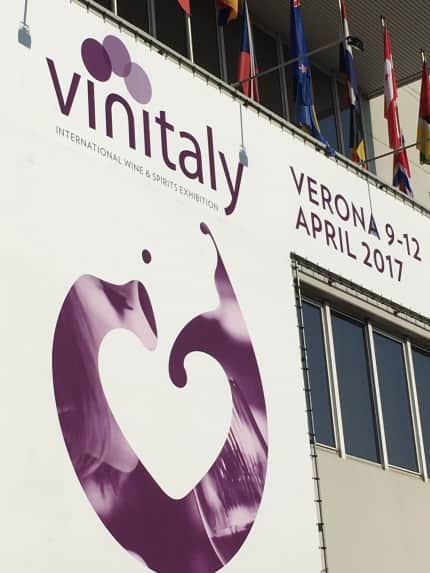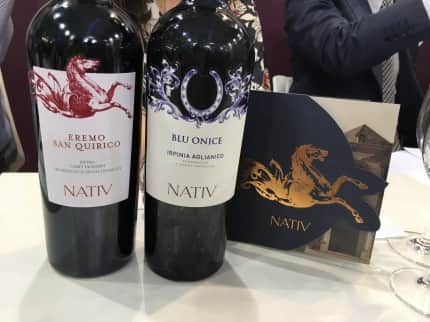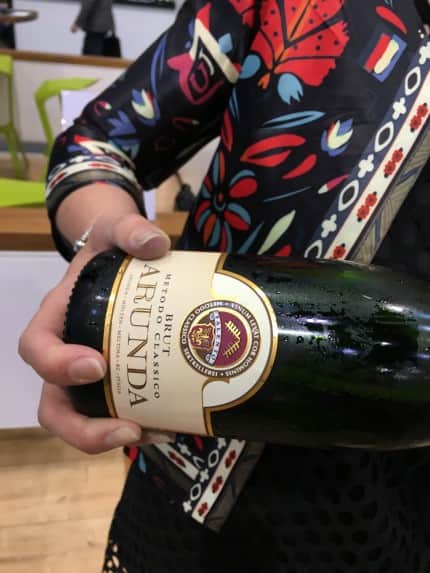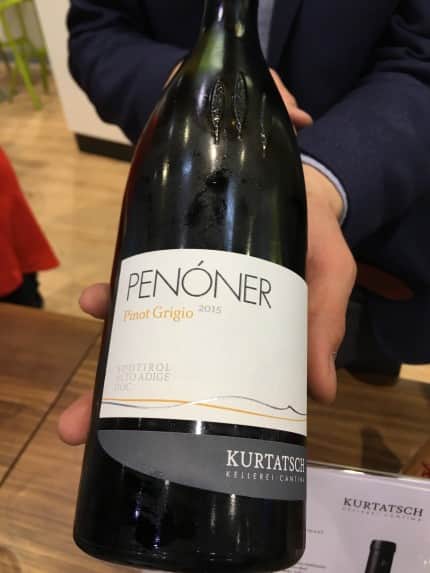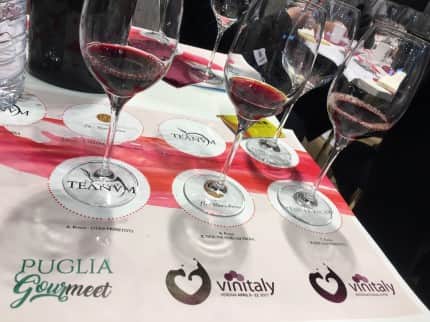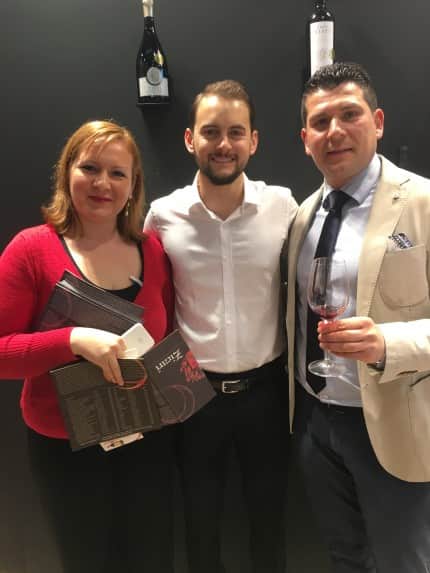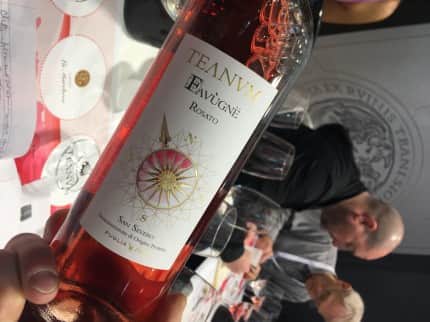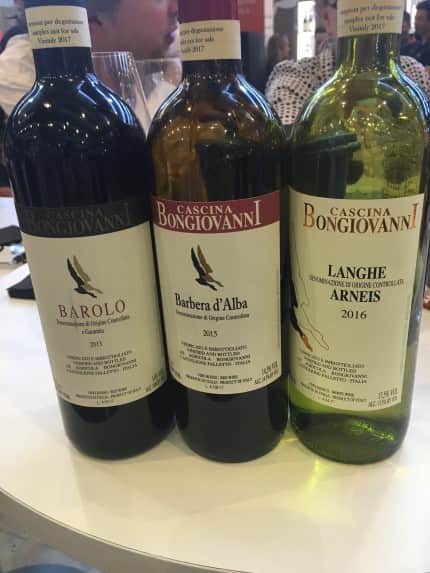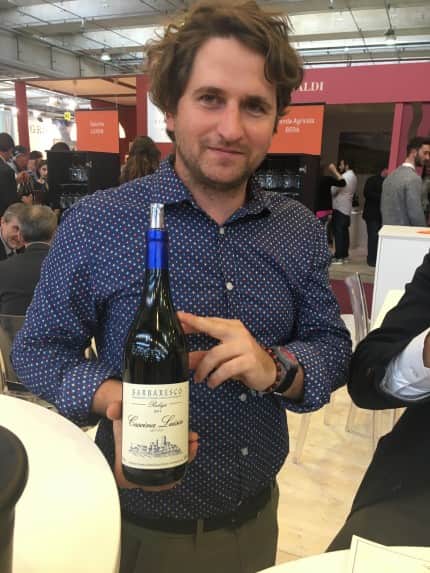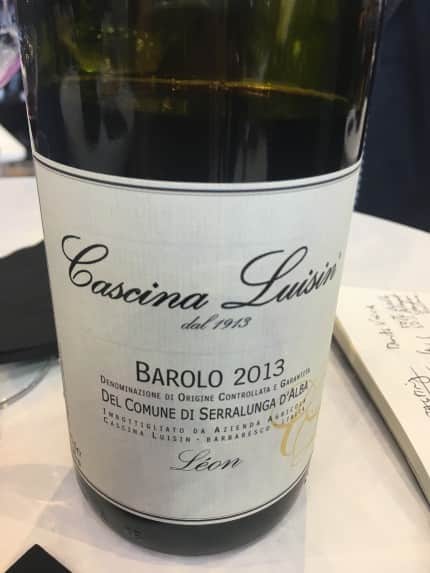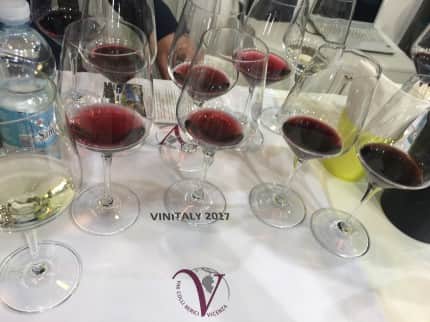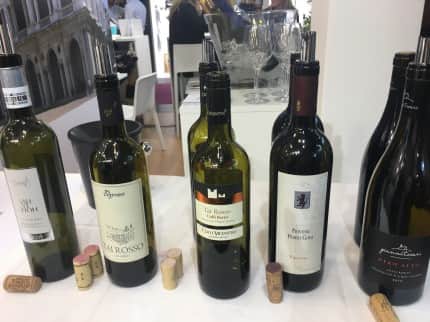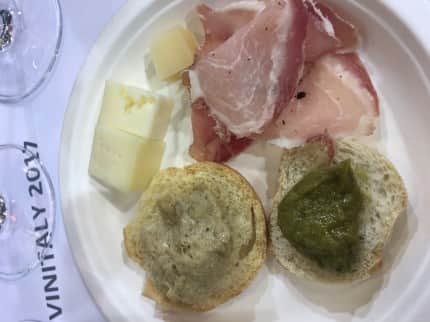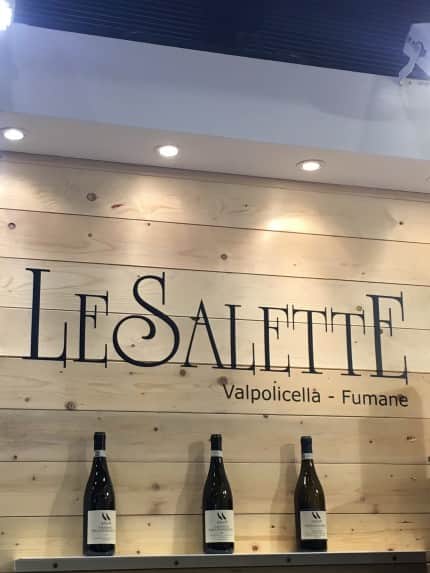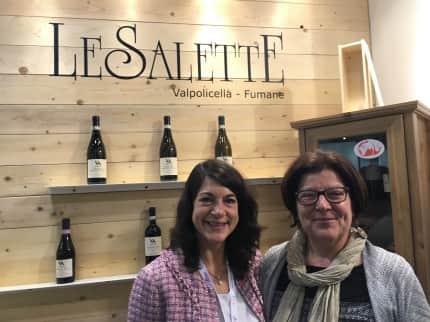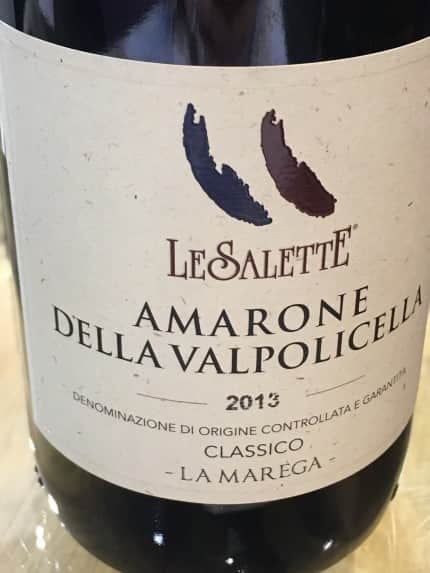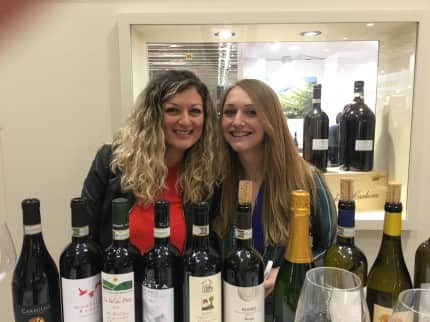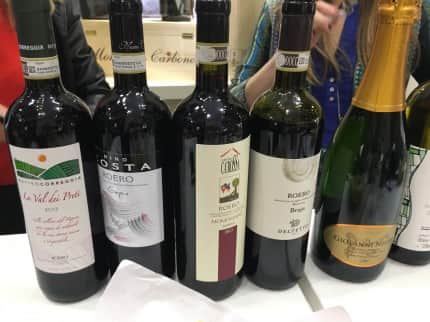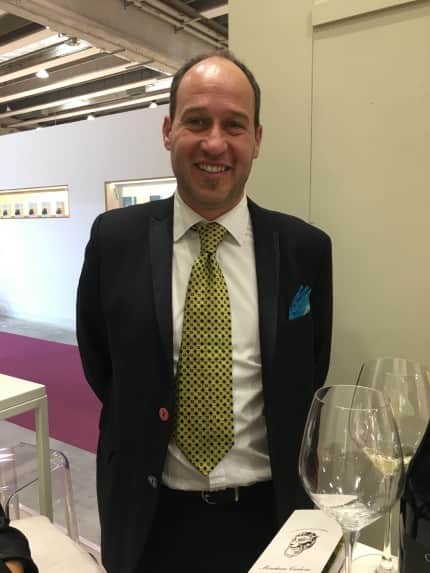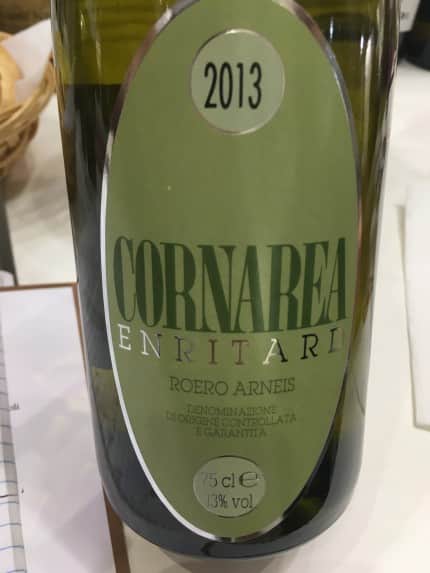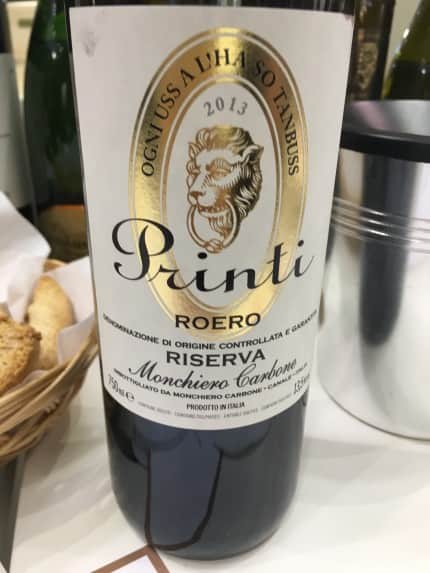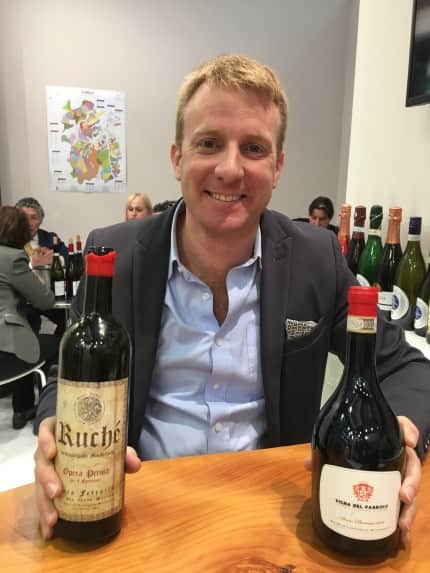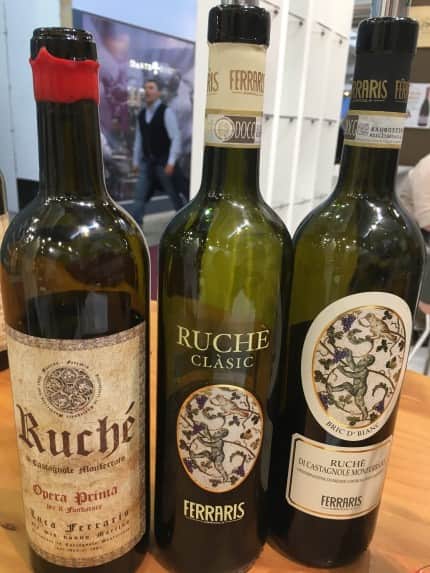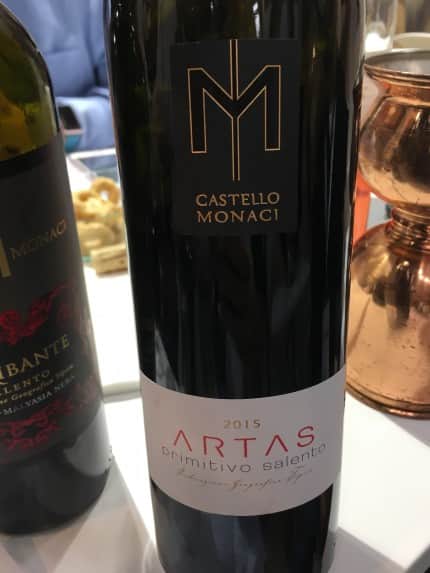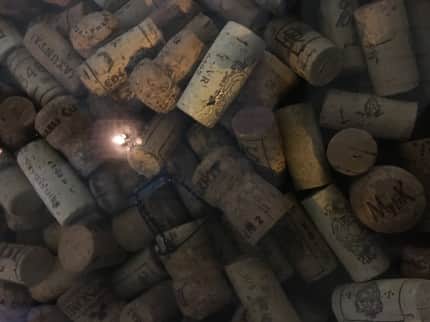How do you create stories about an event where more than 4,000 wineries were present, each serving an average of 6 to 10 wines over a three-day period? Some you plan, some you experience, some are pre-arranged … and some stories are just meant to be told. The ITA had several pre-arranged tastings – some were fantastic and I walked away with an understanding of the region and the wines offered. One was challenging … a neighboring booth had its sound system going and only one wine was poured to the lucky folks that stayed behind to hear more.
Here’s the recap on the tastings:
Our first tasting was with the Consorzio Tutela Vini D’Irpinia, an association of growers and producers from a place known for its terroir and diverse microclimates including volcanic soil. Irpinia is known for bringing back grapes on the edge of extinction like Aglianico (we got to taste in the Nativ Blu Onice), Fiano, Greco, Coda di Volpe and Falanghina. Wineries represented included Greco di Tuto, Nativ, La Molara, Tenuta Cavalier Pepe, De Lisio and Manimurci Zagreo.
Our second tasting was with the Consorzio Alto Adige, a consortium of 155 members made up of cooperative wineries, estate wineries and independent grape growers who cultivate more than 99 percent of this DOC. This is a small wine growing region with about twenty different grapes grown on 5,300 hectares. Approximately 60 percent of the region is dedicated to white wines made up of Pinot Grigio, Gewürztraminer, Pinot Bianco, Chardonnay, Sauvignon Blanc, Müller Thurgau, Sylvaner, Kerner, Riesling, and Veltliner. Reds are focused on Schiava and Lagrein primarily but Pinot Noir, Merlot, Cabernet Sauvignon and Cabernet Franc also are grown.
We tried some really interesting, diverse and tasty wines including a sparkling (Arunda Metodo Classico Brut) and some classic whites (Muri-Gries Wine Estate/Monastery Cellar 2016 Pinot Bianco, Cantina Kurtatsch 2015 Pinot Grigio Penoner, 2015 Manincor Terlan Sauvignon Tannenberg, 2015 Castelfeder Gewürztraminer Vom Lehm) and a delicious red, the 2014 Hans Rottensteiner Lagrein Grieser Riserva Select. This was one of my top region discoveries and I loved the diversity, the German and Austrian influences and the wines were fabulous.
Our third tasting was hosted by the Associazione Puglia in Rose. The association is focused on promoting the regional wine industry including rosé from Apulia, the easternmost region of Italy surrounded by water – the Adriatic Sea in the east and north, and by the Ionian Sea in the south. The climate is Mediterranean in nature with variances in the Summer and Winter. We tried a white wine, several roses and reds from Cantine Teanum, Cantina La Marchesa and Tenuta Zicari. I kept coming back to the Cantine Teanum ‘Alta’ Falanghina white with its notes of tropical fruit, green apple and a nice minerality. I also enjoyed the primitivo reds with lots of black fruit that were easy to drink.
Renato Vezza, the winemaker at Cascina Luisin
Our fourth tasting was focused on the delicious wines of Piedmont with the Associazione Nuovo Radici. The region has 58 DOC and DOCG zones, is the sixth largest producer in volume and has the highest percentage of Italian classified wines. And wow – these were stunners. Piedmont is known for its variety of wines from Asti Spumante to Barbera to the swoon worthy wines made with Nebbiolo like Barolo and Barbaresco as well as Gattinara, Gemme and Roero. What struck me was the approachability of these wines, which traditionally need time to age and open.
We tasted wines from Cantino del Pino, Comm. G.B. Burlotto, Cascina Bongiovanni, Villa Giada and Cascina Luisin. I was so happy I had the chance to talk and taste with Renato Vezza, the winemaker at Cascina Luisin. There are so many gems to discover at this winery with a focus on Nebbiolo, Barbera, Dolcetto and Arneis grapes.
Our final tasting was by the Consorzio Tutela Vini Colli Berici E Vicenza, an organization bringing together the 34 wineries of the region. The Colli Berici refers to the hills between the cities of Vicenza and Padua. The area is known for its clay, volcanic and limestone soils with varying degrees of rain through the region.
We tried five wines from the Colli Berici region – the 2016 Collis Decanto Sauvignon Colli Berici, the 2015 Pegoraro Tai Rosso Colli Berici, the 2015 Vitevis Tai Rosso Colli Berici, the 2013 Piovene Porto Godi Tai Rosso Thovara Colli Berici and the 2013 Gianne Tessari Pianalto Rosso Colli Berici. And then we got to try some local delicacies, which were amazing.
I tasted hundreds of wines and had a few sit-down meetings with some wine folks that I wanted to highlight.
La Salette – Rossella Scamperie
My college friend who now resides in Veneto saw on Facebook that I was going to be attending Vinitaly. He reached out to give me a recommendation on his favorite winery and introduced me to Rossella Scamperle, a member of the winery family and his Italian language teacher.
Me and Rossella Scamperle
La Salette was built as a sanctuary and tribute to the Madonna when she freed the vineyards from phylloxera. The sanctuary is a church that overlooks the hills and vineyards. One of those vineyards is owned by the Scamperle family, a historical winemaking family of Valpolicella who have the same name as the church. For the past four generations, La Salette has been dedicated to producing classic Valpolicella and has 49 dedicated wine growing acres for grapes like Corvina, Corvinone, Rondinella, Oseleta and a little bit of Molinara, and Croatina.
We went through the portfolio of Valpolicella from the entry wines that were fresh and easy to drink to the reserve Valpolicella, Vernose and Amarone wines, that were nuanced and delicious.
Consorzio Tutela Roero
My friend Constance Chamberlain, the CEO of Wine & Co, asked me to a tasting of Roero, another new region to me. Roero is north of Alba (Piedmont), on the left bank of the River Tanaro, between the plain of Carmagnola and the low hills of Astigiano. It used to be part of the Goldo Padano, a sea that dates back 130 million years. The terroir is known for its sandy soils, limestone, clay, fossil rock and sedimentary materials from the old sea. The Roero hills are very dry in nature and get the least amount of rain in all of Piedmont.
The area is known for arneis and nebbiolo grapes. The designation “Roero” is for red wines made from at least 95 percent nebbiolo grapes. In most cases, Roero DOCG is 100 percent nebbiolo. Roero Arneis is a term for white wines that are made from 95 percent arneis grapes and those that are designated Roero Arneis DOCG contain 100 percent arneis. Other Roero DOCG wines include Roero Riserva and Roero Arneis Spumante.
Francesco Monchiero, President of the Roero Consortia and of Monchiero Carbone
I had the chance to talk to the President of the Roero Consorzio, Francesco Monchiero of Monchiero Carbone, one of the biggest and oldest estates in Roero. It seems like this region is all about family and people that have worked together for generations. Monchiero Carbone is in Canale, and was established in the 90’s to reunite two families with winemaking ties back to 1918. Today, Francesco and his wife, Lucrezia, focus on Arneis. When I asked him about the phrase, “Ogni uss a l’ha so tanbuss” and the crest on every bottle, he responded that it stood for “Every door has its knocker.” He added, “if you knock on our door, you’ll find our style of wines.”
We tasted a variety of red and white wines and I learned that Arneis can age like Riesling. These are very drinkable, approachable and fresh wines that can be opened today, but some of them should have “riserva” status as they were more nuanced and elegant. One sidenote: the Arneis Reserve classification will come into effect in 2017 and requires 16 months of aging prior to bottling.
We tried Roero wines from Giovani Armando, Monchiero Carbone, Marco Porello, Azienda Agricola Malvirà, Cornarea, Careglio, Matteo Correggla, Montriggio, Nino Costa, Azienda Agricola Cascina Ca’Rossa and Deltetto.
Ruche: Luca Ferraris
Luca Ferraris of Roche Ferrari Winery
Luca Ferraris from Roche Ferrari Winery is the second largest ruche producer – a varietal that I had never heard of. When Joe Roberts asked me if I wanted to completely “geek out over a region,” the answer was absolutely. He took me to meet Luca, whose family has been involved in making wine since 1921. Luca’s great-grandfather Luigi Ferraris emigrated to American and was one of the lucky folks to strike gold. He sent the money back to his wife, Bruno Teresa, and that led to the purchase of the house that later became the first winery location.
The family began to acquire additional land, vines and bought barrels to make wines. His dad grew grapes and sold them to a cooperative until 2001 when the family started making wine. He had a big commitment to high-quality production and considered it his job to evangelize the varietal. Today the Ferraris estate produces about 130,000 bottles of wine (about 50,000 of Ruchè) from 18 vineyards covering 25 hectares. Luca Ferraris Agricola is the largest family owned agricultural company in the seven municipalities of the Ruchè-growing region.
Ruchè is a relatively scarce, low production red varietal grown almost exclusively hillside around Castagnole Monferrato in the Piedmont region in northern Italy. It’s also a fickle grape with its many leaves to prune that is a labor of love for those who helped it earn its DOC designation in 1987. Overall, the wine has a bright ruby color with delicate floral and red berry aromas.
We tried three Ruchè wines – a classic good, better and best offering from the winery. Our first was the entry level and very easy to drink 2015 Ruchè Clasic. I got notes of black and sour cherry, rose petals and bright fruit with some earthiness.
Our next wine was the 2015 Ruchè di Castagnole Monferrato Bric d’Bianc is the name of the hill most suited for the cultivation of Ruchè.
The next Ruchè was the 2015 Ruchè di Castagnole Monferrato Opera Prima, which was a single vineyard wine. It was delicious and elegant with notes of the cherry and flowers, but depth and complexity. Luca dedicated this wine in memory of his grandfather and it’s very special.
We also tried the 2016 Vigna del Parroco, which had the same floral notes but with red raspberry and almost a nuttiness.
Our final wine was the 2015 Castello Monaci Primitivo Salento Artas. This was a treat – I got tons of dark cherry, raspberry jam and black fruit with notes of rosemary, mocha and cedar. It was elegant and continued to open during our discussion.
And here my whirlwind discussion of wines comes to an end. It was an life-changing journey with amazing people and I feel like I have much more of an understanding of Italian wines. I am so ready to continue to experience the wines, culture and evolution of what I learned at Vinitaly. I consider myself a proud advocate of continuing letting you, my readers know, how my journey progresses.
Powered byPDM Self Defence
